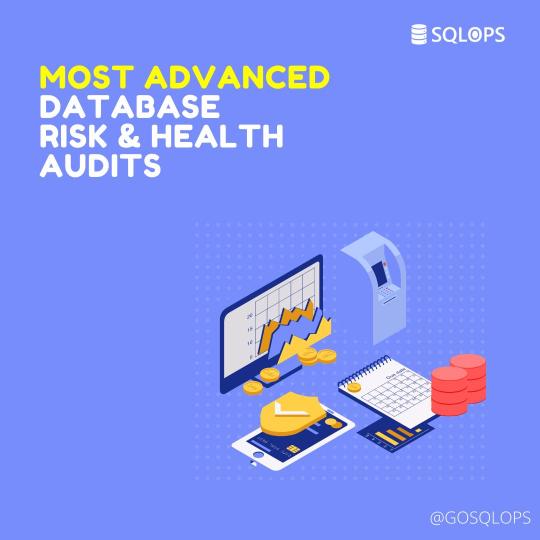#Cloud Database Migration
Explore tagged Tumblr posts
Text
Reliable Data Migration Consultants in USA
When businesses in the USA face the challenge of transferring data between platforms, data migration consultants offer vital support. At RalanTech, our consultants specialize in securely migrating complex databases with zero data loss and minimal downtime. Whether moving to the cloud or upgrading legacy systems, we ensure that your critical information stays intact and accessible.

Our expert team uses strategic methodologies tailored to your organization's infrastructure. From small businesses to large enterprises, our consulting services are scalable, ensuring every migration is completed efficiently. RalanTech’s consultants deliver not just transition—but transformation—through reliable and repeatable processes.
#database migrations#Cloud Database Migration#Application Database Migration#ERP Database Migration#Data Center Migration
0 notes
Text
VastEdge offers MySQL Cloud Migration services, enabling businesses to smoothly transition their MySQL databases to the cloud. Benefit from enhanced performance, scalability, and security with our expert migration solutions. Migrate your MySQL databases with minimal downtime and zero data loss.
#MySQL cloud migration#cloud database migration#VastEdge MySQL services#MySQL migration solutions#secure MySQL migration#cloud database performance#scalable cloud solutions#minimal downtime migration#MySQL cloud scalability#MySQL data migration
0 notes
Text
Migrating SQL Server On-Prem to the Cloud: A Guide to AWS, Azure, and Google Cloud
Taking your on-premises SQL Server databases to the cloud opens a world of benefits such as scalability, flexibility, and often, reduced costs. However, the journey requires meticulous planning and execution. We will delve into the migration process to three of the most sought-after cloud platforms: Amazon Web Services (AWS), Microsoft Azure, and Google Cloud Platform (GCP), providing you with…
View On WordPress
0 notes
Text
Explore how cloud migration drives scalability, cost savings, security, and innovation. Discover key strategies, components, and expert tips for a successful cloud journey on the Next Zen Minds Podcast.
1 note
·
View note
Text
Top 5 data management mistakes costing UAE businesses millions
Introduction
In an increasingly digital economy, poor data practices have become more than just an IT issue—they are an enterprise-level risk.

Across the UAE, businesses are losing millions annually due to fragmented systems, inconsistent governance, and reactive strategies.
In this article, we’ll unpack five critical data managementmistakes, their tangible costs, and what forward-thinking firms are doing to stay compliant, competitive, and data-resilient in 2025.
1. Fragmented Data Silos Across Departments
While decentralization may speed up local decision-making, it often comes at the cost of data cohesion. Sales, marketing, finance, and operations frequently maintain isolated datasets that never sync—each with its own metrics, definitions, and reporting cycles. The cost? Missed opportunities, duplicated efforts, inconsistent KPIs, and customer insights that are either delayed or distorted due to incompatible sources. Fix: Implement centralized data lakes or unified ERP/CRM systems to bridge these silos. Introduce cross-departmental governance protocols, and enforce scheduled data synchronization to maintain consistency across all business functions.
2. Weak Data Governance and Access Controls
Many UAE businesses still lack formal governance policies. There’s little clarity on who owns the data, who can access it, and how data quality is maintained across systems and touchpoints. The cost? Increased risk of data breaches, GDPR/DIFC non-compliance, unauthorized exposure of sensitive information, and eroded stakeholder trust—especially in sectors like healthcare, finance, and public services. Fix: Deploy a robust data governance framework with clearly defined roles, role-based access controls, automated audit trails, and regular compliance reviews. Embed accountability at every stage of data creation and usage.
3. Overreliance on Legacy Infrastructure
Outdated database architectures, manual Excel trackers, and siloed on-prem systems continue to dominate back-end processes—despite widespread digital front-ends. The cost? Performance bottlenecks during scale, limited real-time data visibility, high IT maintenance overheads, and an inability to integrate with modern analytics or automation tools. Fix: Migrate to cloud-native platforms that support elastic scaling, system redundancy, and embedded analytics. Incorporate APIs for seamless integration with existing digital tools while phasing out legacy dependencies.
4. Lack of Data Quality Assurance
Inconsistent formats, missing fields, outdated records, and duplicated entries remain common issues across enterprise datasets—especially when multiple input sources aren’t standardized.
The cost?
Flawed business reports, poor AI/ML model performance, customer experience setbacks, and incorrect decision-making based on unreliable data.
Fix:
Introduce end-to-end data quality frameworks that include automated validation checks, enrichment protocols, and AI-driven anomaly detection.
Regular audits and cleansing routines should be part of standard operations.
5. Treating Data Strategy as a One-Off Project
Many businesses initiate data initiatives as one-time efforts—an implementation followed by months (or years) of stagnation.
Without ongoing refinement, systems become outdated, and processes lose alignment with evolving business needs.
The cost?
Strategic misalignment, increasing technical debt, and declining ROI on digital investments that fail to evolve with the organization’s goals.
Fix:
Create a living data strategy—an adaptive roadmap reviewed quarterly, driven by key stakeholders across departments.
Tie progress to measurable KPIs like operational efficiency, customer satisfaction, or revenue growth from data-led initiatives.
Turn Costly Data Chaos into Smart Business Decisions: Nordstar Vision
At Nordstar Vision, we help businesses move from fragmented systems to future-ready data ecosystems.
Whether you’re struggling with outdated infrastructure, data silos, or lack of governance, our team brings tailored solutions to help you scale confidently in a data-first economy.
Let’s turn your data into a growth engine.
Reach out to us today at +(971) 50 1108756 or visit nordstartvision.
#data management UAE#business data mistakes#UAE data strategy#data governance UAE#database management Dubai#digital transformation UAE#legacy system issues#cloud migration UAE#data silos#enterprise data solutions#data compliance UAE#Nordstar Vision#data quality assurance#CRM data issues#ERP data integration#UAE business IT risks#data-driven decisions#business analytics UAE#smart data practices
1 note
·
View note
Text
Reliable and Secure: The Best Data Migration Services in Toronto by CData Insights
In an era where digital transformation dictates business success, seamless data migration has become a strategic necessity. Whether it's moving databases to a cloud platform or upgrading legacy systems, choosing the best data migration services in Toronto ensures minimal disruption and maximum value.
This is where CData Insights delivers excellence. As a trusted name in data engineering, CData Insights specializes in database migration services designed to meet the dynamic needs of modern businesses across Toronto, Mississauga, and the entire GTA.
Why Choose CData Insights for Data Migration?
Data migration is more than just transferring information—it’s about doing it securely, accurately, and without losing business continuity. With CData Insights, businesses gain a strategic partner who understands the importance of every byte.
Our Strengths:
💡 Tailored Migration Strategies: We analyze your current infrastructure to create a migration roadmap that’s efficient and scalable.
🛡️ End-to-End Security: Data integrity and compliance are our top priorities throughout the migration process.
⚙️ Seamless Integration: We ensure that your new system is fully operational without interrupting ongoing workflows.
📈 Cloud-First Approach: Our team excels in top cloud data migration in Mississauga, helping clients leverage platforms like AWS, Google Cloud, and Azure.
Serving the GTA with Industry-Leading Migration Solutions
CData Insights has successfully executed hundreds of migrations for businesses across the Greater Toronto Area. Whether you're a startup moving to a scalable cloud solution or an enterprise looking to consolidate databases, we offer the best data migration services in GTA that are fast, secure, and future-ready.
Key Services We Offer:
Cloud data migration
On-premise to cloud transitions
Cross-platform database migration
Application and ERP data transfers
Legacy system decommissioning
Data validation and quality assurance
Your Future Starts with a Smarter Migration
With rising data volumes and increasing system complexity, professional migration services are no longer optional—they’re essential. Let CData Insights take the hassle out of data migration so you can focus on innovation and growth.
📞 Ready to migrate with confidence? Partner with CData Insights—your trusted expert in data migration services in Toronto, Mississauga, and the GTA.
#best data migration services in Toronto#top cloud data migration in Mississauga#best data migration services in Gta#database migration service
0 notes
Text
How to Migrate WordPress to GCP Server Using WordOps and EasyEngine
Migrating a WordPress site to Google Cloud Platform (GCP) offers numerous benefits including improved performance, scalability, and reliability. In this comprehensive guide, I’ll walk you through on how to migrate WordPress to GCP using WordOps and EasyEngine, with special attention to sites created with the --wpredis flag. This guide works whether you’re migrating from a traditional hosting…
#cloud hosting#Database migration#EasyEngine#EasyEngine to WordOps#GCP#Google Cloud Platform#How to#rsync#Server migration#Server-to-server WordPress#site migration#Site migration guide#SSH key setup#SSL certificate setup#WordOps#WordOps configuration#WordPress database export#WordPress hosting#WordPress hosting migration#WordPress migration#WordPress Redis#WordPress server transfer#WordPress site transfer#WP migration tutorial#WP-CLI#wp-config
0 notes
Text
Seamless & Secure Data Migration Services in Singapore | Applify!
Migrate, Modernize, and Optimize Your Data With Zero Downtime. Data Migration Services in Singapore help organizations seamlessly and securely transition their data between legacy systems, cloud platforms, databases, or storage solutions while ensuring compliance with local regulations such as PDPA (Personal Data Protection Act).
0 notes
Text

Discover how effective data migration ensures Salesforce implementation success. Learn best practices and strategies to maintain data integrity during your CRM transition.
#Salesforce data migration#CRM data integration#Salesforce implementation best practices#Data migration strategies#Ensuring data integrity in Salesforce#Digital transformation in CRM#Cloud data migration#Database to Salesforce migration#Salesforce implementation strategies#Business data migration solutions
0 notes
Text
What’s Slowing Down Your Database? Find Out How to Fix It Fast!

Is your database running slower than it should? A sluggish database can hurt your business in many ways—from delayed decisions to frustrated customers. The good news? You can fix it fast with database performance optimization!
Why Is My Database Slow?
Here are the main reasons your database might be lagging:
Poor Query Performance – Inefficient queries can slow down data retrieval.
Lack of Indexing – Without proper indexing, your database struggles to find data quickly.
Overloaded Servers – Too much traffic can overwhelm your servers and slow performance.
Fragmentation – Over time, data fragmentation can cause slower read and write times.
Outdated Hardware – Old servers may not be able to handle your database's needs.
How to Fix It Fast
Optimize Queries – Rewrite inefficient queries and use proper indexing to speed things up.
Rebuild Indexes – Regular indexing can help improve data retrieval speed.
Monitor Servers – Keep an eye on server performance and upgrade as needed.
Defragment Your Database – Regular maintenance helps avoid slowdowns.
Cloud Migration – Move to the cloud for better scalability and performance.
Don’t let a slow database hold your business back. At KLUSTERFIRST, we specialize in optimizing database performance. Contact us today to make sure your data is working for you at its best!
#azure#databasemanagement#microsoft#cloudcomputing#business#website optimization#infrastructure#cloud migration#all india database provider
0 notes
Text

At SQLOPS we will give your business the most advanced database risk and health audits which allow you to get a 360 degree view in to the health of your production databases with actionable insights. For more information, visit our website: https://bit.ly/3M2tHeZ
We have been able to save companies millions of dollars, comment below if you think your company could benefit from these services.
#SQLOPS#Atlanta#riskandhealthaudit#businessgrowth#innovation#USA#SQL#businessinsights
0 notes
Text



An extreme cousin for Pluto? Possible dwarf planet discovered at solar system's edge
A small team led by Sihao Cheng, Martin A. and Helen Chooljian Member in the Institute for Advanced Study's School of Natural Sciences, has discovered an extraordinary trans-Neptunian object (TNO), named 2017 OF201, at the edge of our solar system.
The TNO is potentially large enough to qualify as a dwarf planet, the same category as the much more well-known Pluto. The new object is one of the most distant visible objects in our solar system and, significantly, suggests that the empty section of space thought to exist beyond Neptune in the Kuiper Belt is not, in fact, empty at all.
Cheng made the discovery alongside colleagues Jiaxuan Li and Eritas Yang from Princeton University, using advanced computational methods to identify the object's distinctive trajectory pattern on the sky. The new object was officially announced by the International Astronomical Union's Minor Planet Center on May 21, 2025, and shared in an arXiv pre-print.
Trans-Neptunian objects are minor planets that orbit the sun at a greater average distance than the orbit of Neptune. The new TNO is special for two reasons: its extreme orbit and its large size.
"The object's aphelion—the farthest point on the orbit from the sun—is more than 1600 times that of Earth's orbit," explains Cheng. "Meanwhile, its perihelion—the closest point on its orbit to the sun—is 44.5 times that of Earth's orbit, similar to Pluto's orbit."
This extreme orbit, which takes the object approximately 25,000 years to complete, suggests a complex history of gravitational interactions.
"It must have experienced close encounters with a giant planet, causing it to be ejected to a wide orbit," says Yang.
"There may have been more than one step in its migration. It's possible that this object was first ejected to the Oort cloud, the most distant region in our solar system, which is home to many comets, and then sent back," Cheng adds.
"Many extreme TNOs have orbits that appear to cluster in specific orientations, but 2017 OF201 deviates from this," says Li.
This clustering has been interpreted as indirect evidence for the existence of another planet in the solar system, Planet X or Planet Nine, which could be gravitationally shepherding these objects into their observed patterns. The existence of 2017 OF201 as an outlier to such clustering could potentially challenge this hypothesis.
Cheng and his colleagues estimate 2017 OF201's diameter to be 700 km, which would make it the second largest known object in such a wide orbit. The diameter of Pluto, meanwhile, is 2,377 km. Further observations, potentially using radio telescopes, are needed to determine the object's exact size.
Cheng discovered the object as part of an ongoing research project to identify TNOs and possible new planets in the outer solar system. The object was identified by pinpointing bright spots in an astronomical image database from the Victor M. Blanco Telescope and Canada France Hawaii Telescope (CFHT), and trying to connect all possible groups of such spots that appeared to move across the sky in the way a single TNO might.
This search was carried out using a computationally efficient algorithm produced by Cheng. Ultimately, they identified 2017 OF201 in 19 different exposures, captured over 7 years.
The discovery has significant implications for our understanding of the outer solar system. The area beyond the Kuiper Belt, where the object is located, has previously been thought to be essentially empty, but the team's discovery suggests that this is not so.
"2017 OF201 spends only 1% of its orbital time close enough to us to be detectable. The presence of this single object suggests that there could be another hundred or so other objects with similar orbit and size; they are just too far away to be detectable now," Cheng states.
"Even though advances in telescopes have enabled us to explore distant parts of the universe, there is still a great deal to discover about our own solar system."
The detection also demonstrates the power of open science. "All the data we used to identify and characterize this object are archival data that are available to anyone, not only professional astronomers," says Li.
"This means that groundbreaking discoveries aren't limited to those with access to the world's largest telescopes. Any researcher, student, or even citizen scientist with the right tools and knowledge could have made this discovery, highlighting the value of sharing scientific resources."
TOP IMAGE: A composite image showing the five dwarf planets recognized by the International Astronomical Union, plus the newly discovered trans-Neptunian object 2017 OF201. Credit: Images of dwarf planets: NASA/JPL-Caltech; image of 2017 OF201: Sihao Cheng et al.
CENTRE IMAGE: Credit: Institute for Advanced Study
LOWER IMAGE: Credit: Institute for Advanced Study
2 notes
·
View notes
Text
clip studio paint is driving me up a wall
do you use clip studio paint on windows? are you fucking tired of running out of storage space because you download a lot of materials and brushes? are your materials files stuck on your local c drive and you don't know how to move it?
making this tutorial because for some reason all other tutorials miss what you're supposed to do after changing the directory. btw, i use windows. fuck ya macos (i don't know how to help you guys)
close all clip studio programs and go to clip studio

2. go to the settings icon in the top right corner and hover over it. click on location of materials (p)

remember the address of the current location of materials.
3. create a new folder in your alternate drive/storage space. do not add anything in it. do not copy anything in it. simply write that new folder's address in here. click save changes.

now if you're like me and downloaded a ton of stuff, it's gonna take a while to load. it's transferring your document and material folders over. let it run. when it's complete, acknowledge and accept the popup.
4. CRUCIAL: after this step, delete the old "Document" and "Material" folders from the old directory (the address you memorized) (likely located in some address that has AppData (newer versions) in it or Documents (older versions)) (if you can't find this, turn hidden folders on in file explorer, AppData is a hidden folder).
when you try to exit out of this clip studio instance, it will also remind you to remove old files before closing the application. do NOT delete the CLIPStudioCommon folder. LEAVE the DB and other folders there.
before:

after:

5. after deleting the old folders, exit out of the clip studio instance. and you're done.
now you should enjoy like, a good 10 more gb of storage. at least for me. i'm enjoying that. also i use csp latest version 1 version (like 1.13 something idk) (i'll upgrade when they give me a free upgrade).
i forget if this is available for earlier versions but i did migrate csp across devices a lot, and that was a bunch of manually copying folders, which won't work for transferring between drives like this tutorial.
by the way if you're doing something like manually copying full folders over (like the old method of transferring csp between devices), you may find that your materials/organization structure is gone. you can go through clip studio and run both "Organize Materials" and "Organize Material Folders" to restore them to that tab in clip studio paint. at least when i was fucking around trying to find out how to put my materials on a different drive, i went through several iterations of backing up and copying back over 13.4 gb of data because i'd mess up One step.

disclaimer: i have not tried downloading new materials yet. i swear to fucking god they better download in my other drive. i am sick and tired of running out of storage. imagine being an engineer debugging code and then files on your computer start to disappear because your C drive ran out of space. happened to me!!!
no i don't know what will happen if you try to put these materials folders on a flashdrive. i think that's an "external drive" and there's some warning for that in the middle of this process. i feel like there's nothing wrong with that so long as you always plug that drive in when you use clip studio products or CSP at least.
if you encounter problems in the middle of this, i don't know how to solve them. i saw some people encounter problems when transferring the data over after changing the address and i don't know where their issues were (this issue seems to be because they installed CSP on D). this seems to be an article summarizing transferring csp across devices (both cloud and the old manual way)
discussion below:
my theory is that the DB folders are like a "database" that holds addresses towards those files and therefore need to stay in the C drive for. some godawful reason. i think i tried installing csp on my D drive before, but it would automatically create a new folder in users/documents in my C drive (in older versions).
after weakly changing this directory and not giving a shit for a while (idk when updates come out. it must've been a year or a few), they changed this address to Users/AppData/somethign/blah blah
i spend too much time trying to manage storage on my computer it's not healthy. anyways kudos to treesize the program for telling me that this entire time clip studio paint fucking updated and changed my meticulous structure to place files in places where there's space to it's shit default structure.
oh and i don't think there's a solution here but it's kind of informative on clip studio's organization structure?
first wacom, now csp. sai1 didn't work with my huion either. maybe i'm forever doomed to be cucked by japanese art products. come to think of it, micron pens hate me too.
nobody ever let me touch copics.
#clip studio paint#clip studio paint tutorial#art reference#talks#literally gotta save this for MYSELF tbh#csp
12 notes
·
View notes
Text
Migrating SQL Server Databases from Google Cloud VM to Azure SQL Server
Introduction Hey there, fellow data enthusiasts! If you’re like me, you’ve probably found yourself in a situation where you need to migrate your SQL Server databases from one cloud platform to another. It can be a daunting task, especially if you’re not sure where to start. But fear not, my friends! Today, I’m going to share with you the best way to import your databases from a Google Cloud VM…
View On WordPress
0 notes
Text
Cloud Migration and Integration A Strategic Shift Toward Scalable Infrastructure
In today’s digital-first business environment, cloud computing is no longer just a technology trend—it’s a foundational element of enterprise strategy. As organizations seek greater agility, scalability, and cost-efficiency, cloud migration and integration have emerged as critical initiatives. However, transitioning to the cloud is far from a lift-and-shift process; it requires thoughtful planning, seamless integration, and a clear understanding of long-term business objectives.

What is Cloud Migration and Why Does It Matter
Cloud migration involves moving data, applications, and IT processes from on-premises infrastructure or legacy systems to cloud-based environments. These environments can be public, private, or hybrid, depending on the organization’s needs. While the move offers benefits such as cost reduction, improved performance, and on-demand scalability, the true value lies in enabling innovation through flexible technology infrastructure.
But migration is only the first step. Cloud integration—the process of configuring applications and systems to work cohesively within the cloud—is equally essential. Without integration, businesses may face operational silos, inconsistent data flows, and reduced productivity, undermining the very purpose of migration.
Key Considerations in Cloud Migration
A successful cloud migration depends on more than just transferring workloads. It involves analyzing current infrastructure, defining the desired end state, and selecting the right cloud model and service providers. Critical factors include:
Application suitability: Not all applications are cloud-ready. Some legacy systems may need reengineering or replacement.
Data governance: Moving sensitive data to the cloud demands a strong focus on compliance, encryption, and access controls.
Downtime management: Minimizing disruption during the migration process is essential for business continuity.
Security architecture: Ensuring that cloud environments are resilient against threats is a non-negotiable part of migration planning.
Integration for a Unified Ecosystem
Once in the cloud, seamless integration becomes the linchpin for realizing operational efficiency. Organizations must ensure that their applications, databases, and platforms communicate efficiently in real time. This includes integrating APIs, aligning with enterprise resource planning (ERP) systems, and enabling data exchange across multiple cloud platforms.
Hybrid and Multi-Cloud Strategies
Cloud strategies have evolved beyond single-provider solutions. Many organizations now adopt hybrid (combining on-premise and cloud infrastructure) or multi-cloud (using services from multiple cloud providers) approaches. While this enhances flexibility and avoids vendor lock-in, it adds complexity to integration and governance.
To address this, organizations need a unified approach to infrastructure orchestration, monitoring, and automation. Strong integration frameworks and middleware platforms become essential in stitching together a cohesive IT ecosystem.
Long-Term Value of Cloud Transformation
Cloud migration and integration are not one-time projects—they are ongoing transformations. As business needs evolve, cloud infrastructure must adapt through continuous optimization, cost management, and performance tuning.
Moreover, integrated cloud environments serve as the foundation for emerging technologies like artificial intelligence, data analytics, and Internet of Things (IoT), enabling businesses to innovate faster and more efficiently.
By treating cloud migration and integration as strategic investments rather than tactical moves, organizations position themselves to stay competitive, agile, and future-ready.
#CloudMigration#CloudIntegration#DigitalTransformation#HybridCloud#MultiCloud#CloudComputing#InfrastructureModernization#ITStrategy#BusinessContinuity
2 notes
·
View notes
Text
Optimize Your ERP with Strategic SAP Landscape Transformation Solutions

In today’s fast-evolving business landscape, organizations must adapt to stay competitive. SAP S/4HANA offers a powerful platform to drive efficiency, innovation, and growth. However, transitioning to this next-generation ERP system requires strategic planning and expertise. CBS Consulting, a trusted leader in SAP Landscape Transformation, specializes in S4HANA Selective Data Migration and S4HANA Migration Services, empowering businesses to achieve Digital Transformation S4HANA through RISE with SAP. This article explores how CBS Consulting can guide your organization to a seamless and value-driven S/4HANA migration.
Why SAP S/4HANA is Essential for Digital Transformation
SAP S/4HANA is more than an ERP upgrade—it’s a catalyst for Digital Transformation S4HANA. Built on the in-memory SAP HANA database, it delivers real-time insights, streamlined processes, and a modern user experience through SAP Fiori. Unlike SAP ECC, S/4HANA supports cloud, on-premise, and hybrid deployments, offering scalability and flexibility. With SAP’s 2027 deadline for ECC support looming, businesses must act now to avoid disruptions and leverage S/4HANA’s advanced capabilities, such as embedded analytics and seamless integration with CRM and SCM systems.
The Power of SAP Landscape Transformation
SAP Landscape Transformation is critical for organizations with complex IT environments. It involves consolidating, harmonizing, and optimizing systems to align with business goals. CBS Consulting, a founding member of SAP’s S/4HANA Selective Data Transition Engagement, uses proven methodologies to simplify your IT landscape. By eliminating redundancies and outdated data, CBS ensures a lean, future-ready system that maximizes efficiency and minimizes costs. This approach reduces project timelines by up to 50%, enabling faster adoption of S/4HANA innovations.
S4HANA Selective Data Migration: A Strategic Approach
S4HANA Selective Data Migration offers a balanced alternative to greenfield (new implementation) and brownfield (system conversion) approaches. This hybrid method, also known as the Bluefield approach, allows businesses to selectively migrate relevant data and processes while redesigning others to align with S/4HANA’s capabilities. CBS Consulting leverages proprietary tools like the CBS Enterprise Transformer to ensure near-zero downtime and high data quality. For example, you can retain critical historical data, such as five years of financial records, while leaving obsolete data behind, ensuring a consistent document flow without business disruption.
This approach is ideal for organizations with multiple ERP systems or those undergoing mergers and acquisitions. CBS Consulting’s expertise ensures that only business-critical data is migrated, reducing storage costs and enhancing system performance. By combining selective process redesign with targeted data transformation, CBS delivers a tailored migration that aligns with your strategic objectives.
Comprehensive S4HANA Migration Services
CBS Consulting’s S4HANA Migration Services provide end-to-end support for your transformation journey. From initial assessment to post-go-live optimization, their eight-step methodology ensures success:
Discovery Phase: Analyze your existing IT landscape to identify key data and processes.
Migration Assessment: Define migration objects and harmonization scope.
System Installation: Set up S/4HANA with customized configurations.
Data Migration: Use SAP’s Migration Cockpit and CBS tools to cleanse and transfer data.
Testing: Conduct rigorous unit, integration, and user acceptance testing.
Process Re-implementation: Redesign processes using S/4HANA best practices.
Training and Change Management: Equip users with tailored training for smooth adoption.
Go-Live Support: Execute a seamless cutover with minimal downtime.
With over 5,000 successful go-lives, CBS Consulting ensures a secure, agile, and cost-effective transition to S/4HANA, whether on-premise or in the cloud.
RISE with SAP: Accelerating Your Cloud Journey
RISE with SAP simplifies the move to S/4HANA Private Cloud, offering a subscription-based model that integrates hosting, services, and innovation. CBS Consulting enhances this offering with pre-packaged migration scenarios, enabling businesses to leverage cloud benefits like scalability and reduced infrastructure costs. For instance, CBS successfully transformed SPS Companies Inc.’s ERP system to S/4HANA Private Cloud, harmonizing financial structures and implementing Fiori apps for enhanced usability. This cloud-first approach ensures flexibility and future-proofs your IT landscape.
Why Choose CBS Consulting?
As a global leader in SAP transformations, CBS Consulting combines technical expertise with deep business understanding. Their membership in SAP’s Selective Data Transition Engagement ensures adherence to international standards, delivering high-quality, low-risk migrations. Whether you’re consolidating systems, migrating data, or embracing RISE with SAP, CBS tailors solutions to your unique needs, driving measurable value and competitive advantage.
Conclusion
Transitioning to SAP S/4HANA is a strategic imperative for businesses aiming to thrive in the digital era. With CBS Consulting’s expertise in SAP Landscape Transformation, S4HANA Selective Data Migration, and S4HANA Migration Services, your organization can achieve a seamless Digital Transformation S4HANA. By leveraging RISE with SAP, CBS ensures a fast, secure, and business-focused migration. Start your journey today with CBS Consulting and unlock the full potential of S/4HANA.
1 note
·
View note